How to Write a Seriously Sweet Design Proposal

We won’t sugarcoat it, losing proposals is really crumby. You spend so much time on a design proposal, confident that you can exceed expectations, but the client ends up going in a different direction. We’ve been there, it sucks.
But you’re a tough cookie.
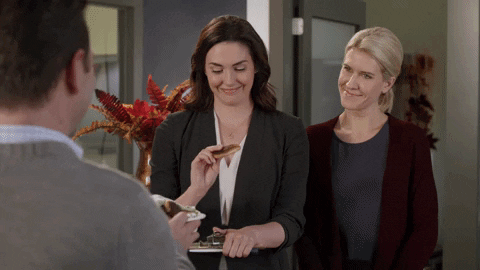
So what's the problem with your design proposals and how can you fix it?
Today we’re covering everything design-proposal-related, from basic definitions and mistakes to how to make your design proposal unique and memorable. After reading this blog, you’ll have all the secret ingredients to whip up a seriously sweet design proposal that will win over every client. So let’s get to it!
What is a Design Proposal?
A design proposal is a document or presentation that outlines your intentions for a design project. It is a way to convince a client to work with you.
Potential clients request design proposals because they are probably choosing between multiple creatives. They want to compare prices, timelines, portfolios, etc. That’s why it’s super important to write a design proposal that stands out!
But first, let's take a look at common design proposal mistakes.
Your Cookie-Cutter Template: How to Write a Sweet Design Proposal
Of course every design proposal will be unique, but here are 5 essential sections to add to every design proposal template, whether you’re a graphic or interior designer, or an architect or engineer.
🛑 Before you whip up your own design proposal, make sure you have an initial conversation with the potential client. What problem is the client facing? Why do they need your help specifically? If you can pinpoint these two questions, you can better tailor your design proposal to fit the project. 🛑
1. General Information
The very front page of your design proposal should be addressed to your potential client and should contain their address, person or place of contact, and general information such as an email and phone number.

You should include this same information for yourself or agency as well, so your client can easily contact you with questions, concerns, or the job! 🤞
2. Project Overview
This section of your design proposal outlines the goals of your prospects and how your services specifically will fulfill their objectives. This is the time to convince your client that you understand their needs (that’s why that initial conversation is crucial!).
A project overview doesn’t have to be long, maybe 1-2 paragraphs, but your service descriptions should be a little more detailed. Tell the potential client what experience or services you can provide them.
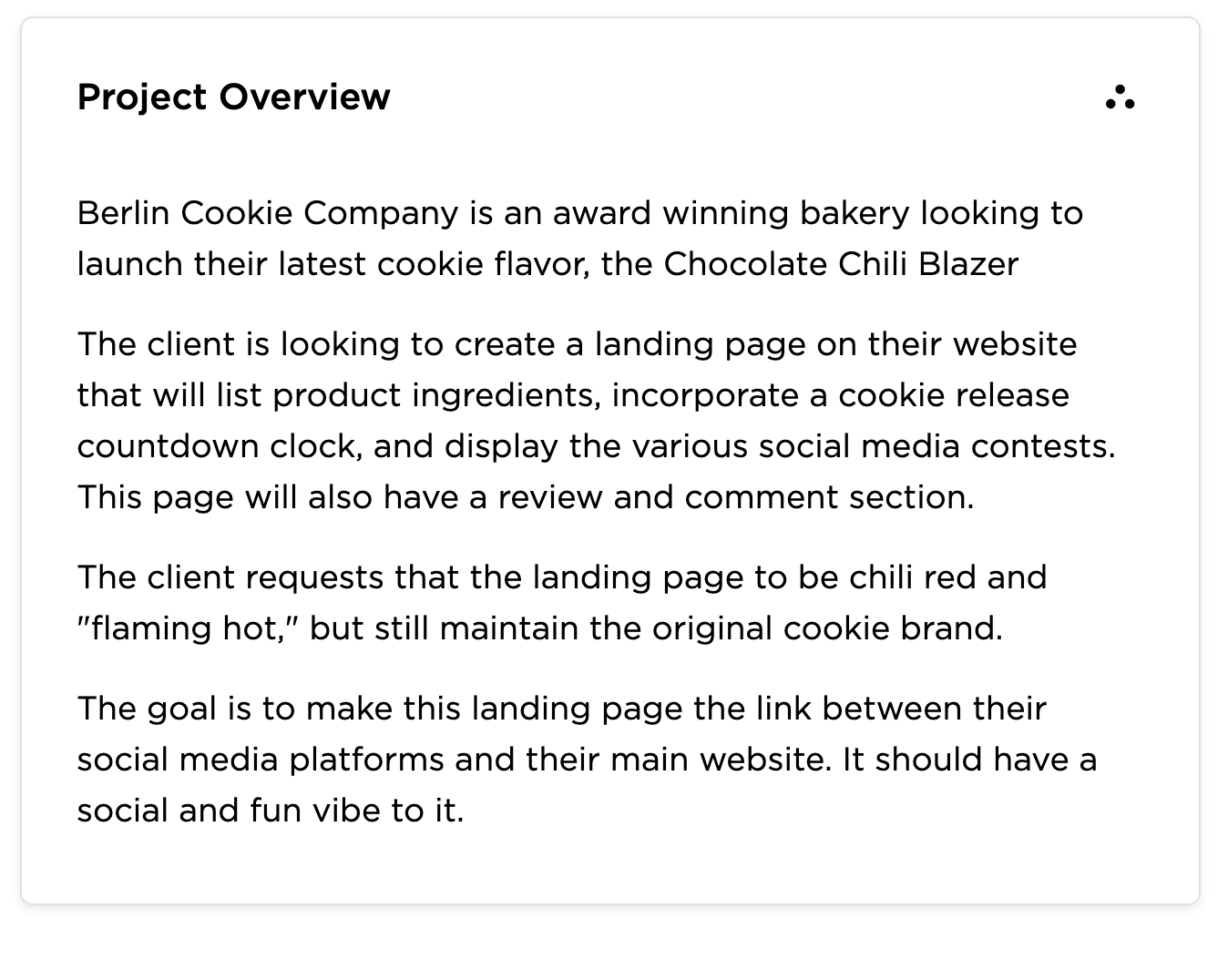
When it comes to your services, it might be helpful to give the client different options to choose from, like design ideas, strategies, or packages. This shows that you are flexible and can adapt to provide the client with a great experience.
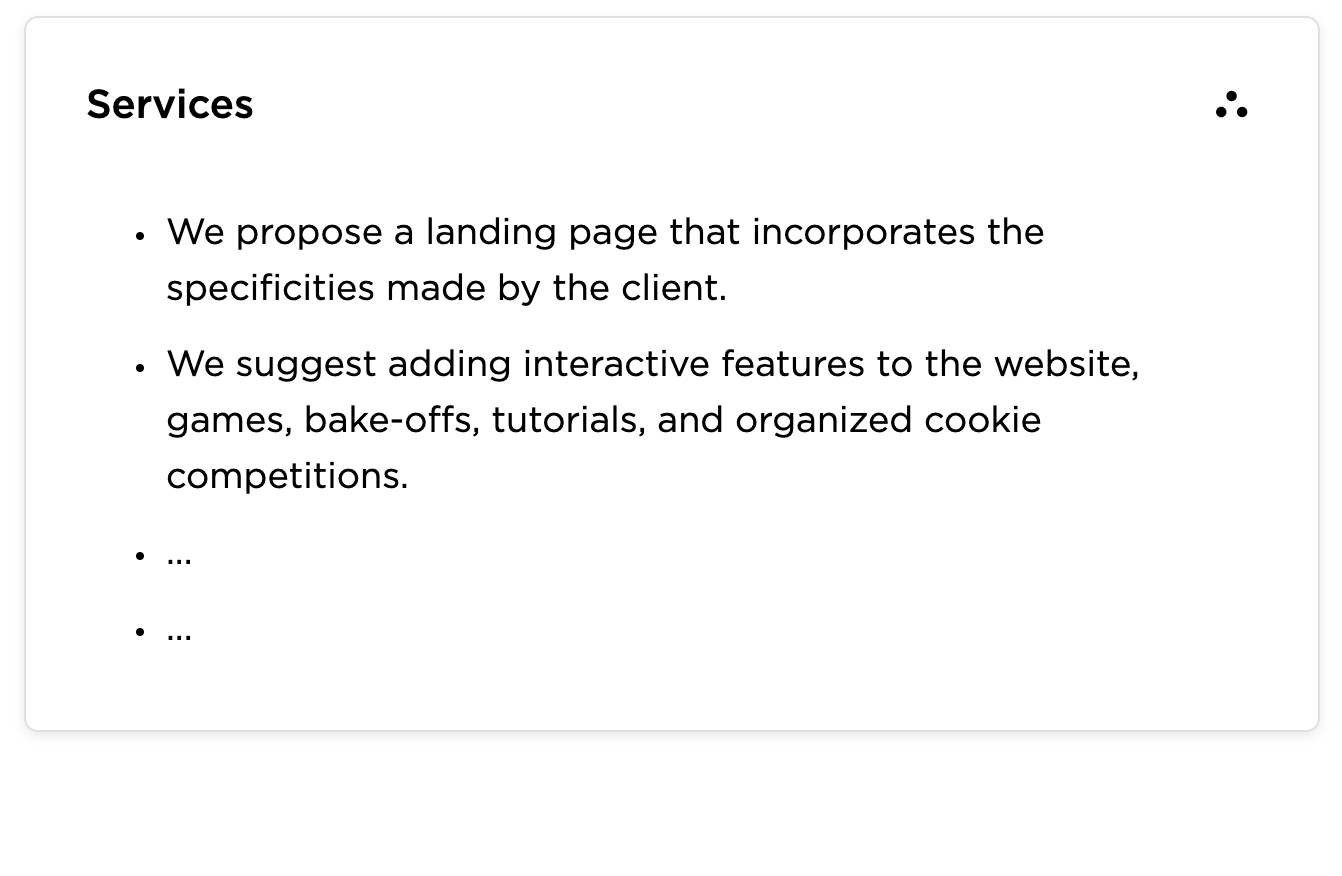
☝️Remember that your design proposal isn’t binding. You’ll have many opportunities to change your ideas in the future, like in your statement of work, for example. A design proposal is just a way for a potential client to get to know you and your services a little better!
3. Pricing
Although it can be pretty tough to give accurate pricing information before you land the project, there are a few things that you can specify right from the start.
- Are your services set at a fixed price?
- Do you charge an hourly rate?
- Are some iterations included in the price
- What are your billing and payment terms?
- Do you require a deposit?
- What is your preferred payment method?
4. Timeline
Adding a timeline into your design proposal is a great way to give an expected overview of how long a project will take to complete. If you suggested multiple ideas or solutions in the project overview section, you can represent each option in the timeline as well. Sometimes adding visuals can make all the difference!
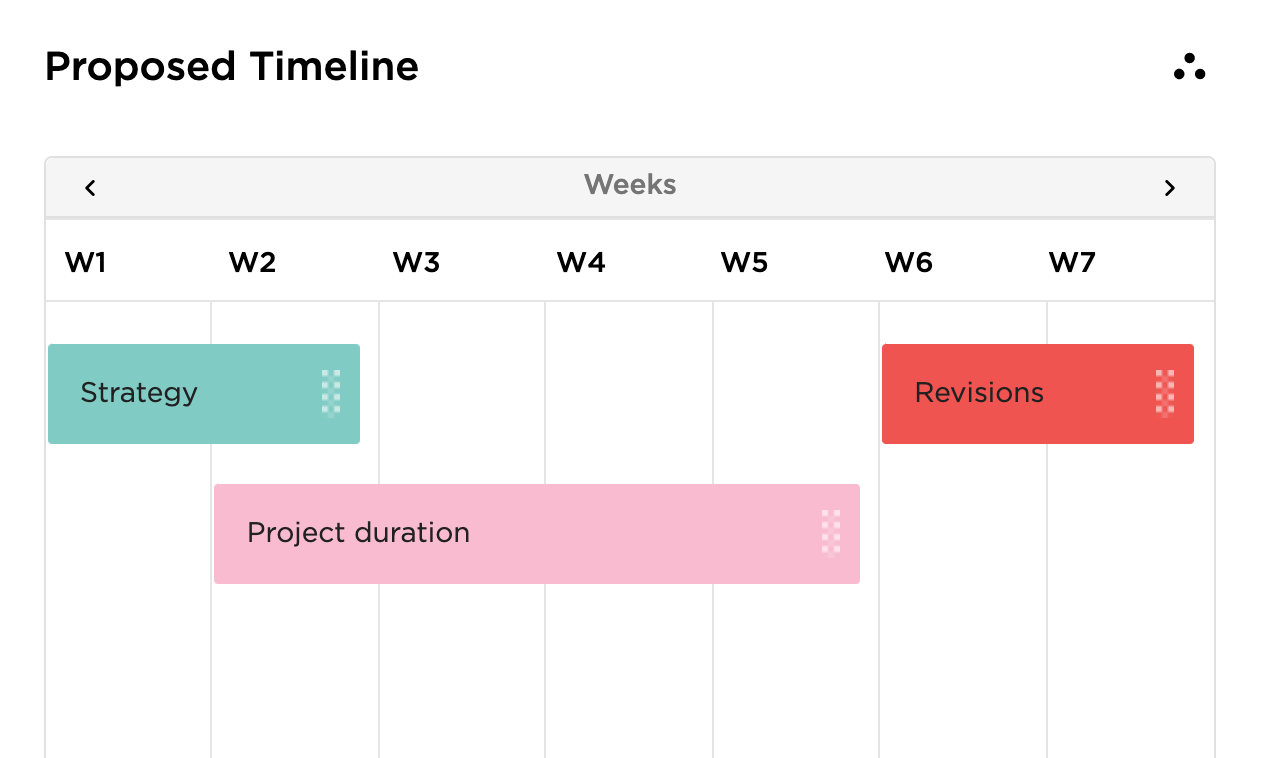
5. Conditions
Terms and conditions are set so that you and your services aren't taken for granted. While this section is different for every individual creative, project, and industry, it could include everything from deposits, project ownership and originality, to delays, and termination of agreements.
Typically this section uses more formal language and sometimes even requires a signature from both parties
Decorate Your Design Proposal to Match Your Creative Needs
So far we’ve given you a skeleton outline of what your design proposal should look like, but at the same time, you want your design proposal to be memorable and unique. Here are a few helpful tricks to sprinkle throughout your design proposal!
1. Do Your Research
Coming into a project prepared makes you look really good. It makes you seem enthusiastic to take on a new project and develop a positive designer-client relationship. So do your research! Find out all about the clients company, what are their marketing strategies, what are their goals in the next 5 years, etc.
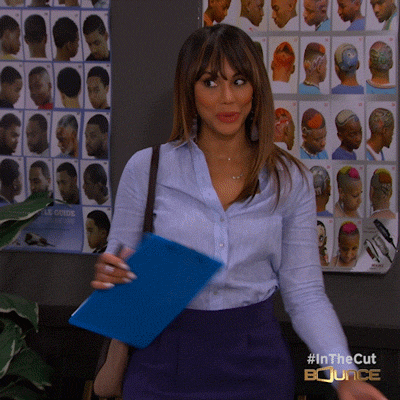
By understanding your potential client, you can write the design proposal that tailors to them specifically. It’s worth the time and effort!
2. Make it Your Own
With the convenience of the internet, it's so easy to find creatives to work on a project all over the world. This means it’s vital to add elements to your design proposal that make you stand out from the crowd.
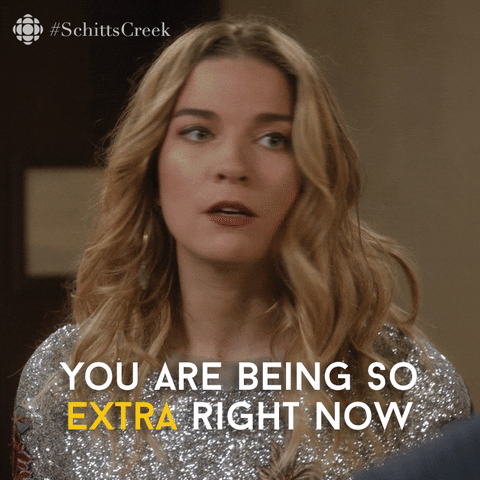
Here are a few ideas:
- Add an ‘about me’ page: Give your client the inside scoop about you and your design experience. Talk about the reasons you are the best fit for this project and what makes you unique.
- Include a portfolio: Potential clients aren't just booking you for your smarts, but your creative work too! Feel free to add your portfolio to your design proposal so clients can see if you match their creative envisions.
- Make your design proposal colorful: This certainly depends on the formality of your industry or company, but incorporating color into your design proposal, especially if it’s a presentation, can help clients remember you! Don’t be afraid to let your creativity show.
3. Use the Right Tools
Adopting the right tools for your design proposal can really make or break your case! Don’t send over locked documents created on platforms made only for designers, that’s a real headache for all parties.
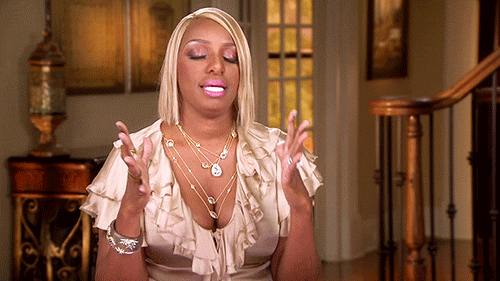
Collato gives you all the tools to create and customize your own design proposal template and seamlessly (and safety) send it to your potential client. And better yet, they don’t even need to make an account or sign up with Collato to access your design proposal.
Design Proposal Fails
There are some common fails in writing design proposals that could steer a potential client to another designer. Make sure you're not guilty of these three mistakes:
1. Wrong Emphasis
Clients want to know how you can achieve their project goal. Focus more on what your potential client will receive rather than what you will do. For example,
I/We will make a landing page that is linked to social media platforms
vs.
All your social media accounts will be linked to your new landing page, allowing your customers to easily navigate the website content.
Your language here makes a huge difference! All of a sudden your design proposal is about the client and their deliverables, as well as the advantages of moving forward with the project.
2. Unclear Budget Expectations
Budget and price range are sometimes hard to talk about, but the thing is, these are the key elements that drive a successful designer-client relationship. If your potential client has a budget in mind, it should be apparent to you from the very beginning. Otherwise, both parties will set unrealistic expectations regarding compensation.
3. Not Enough Time
Although it's important to follow up with a potential client on their decision to work with you or not, sometimes they need a little more time to weigh all their options. The decision to work with you, especially if they are investing a lot of money into the project, isn't taken lightly. Instead of giving them a deadline right away, ask if they have any questions or if you can clarify anything to them. This not only helps move the process along, but shows off your awesome customer service skills too!
What Pairs Best with Cookies? Collato!
Knowing how to present yourself in a design proposal is a valuable skill that will greatly benefit both you and your potential clients. Not only is a design proposal helpful to show off your mad creative skills, but it’s a way to make sure you and a client are a batch made in heaven.
We hope that you now feel confident enough to write your own design proposal, but if you’re too tied-up to make your own, Collato is here to help! We have a template that has everything you need to write a perfect design proposal. Check it out here!
🍦 Related topics you may be interested in:
1. How to best quote a design project
2. 7 design collaboration hacks
